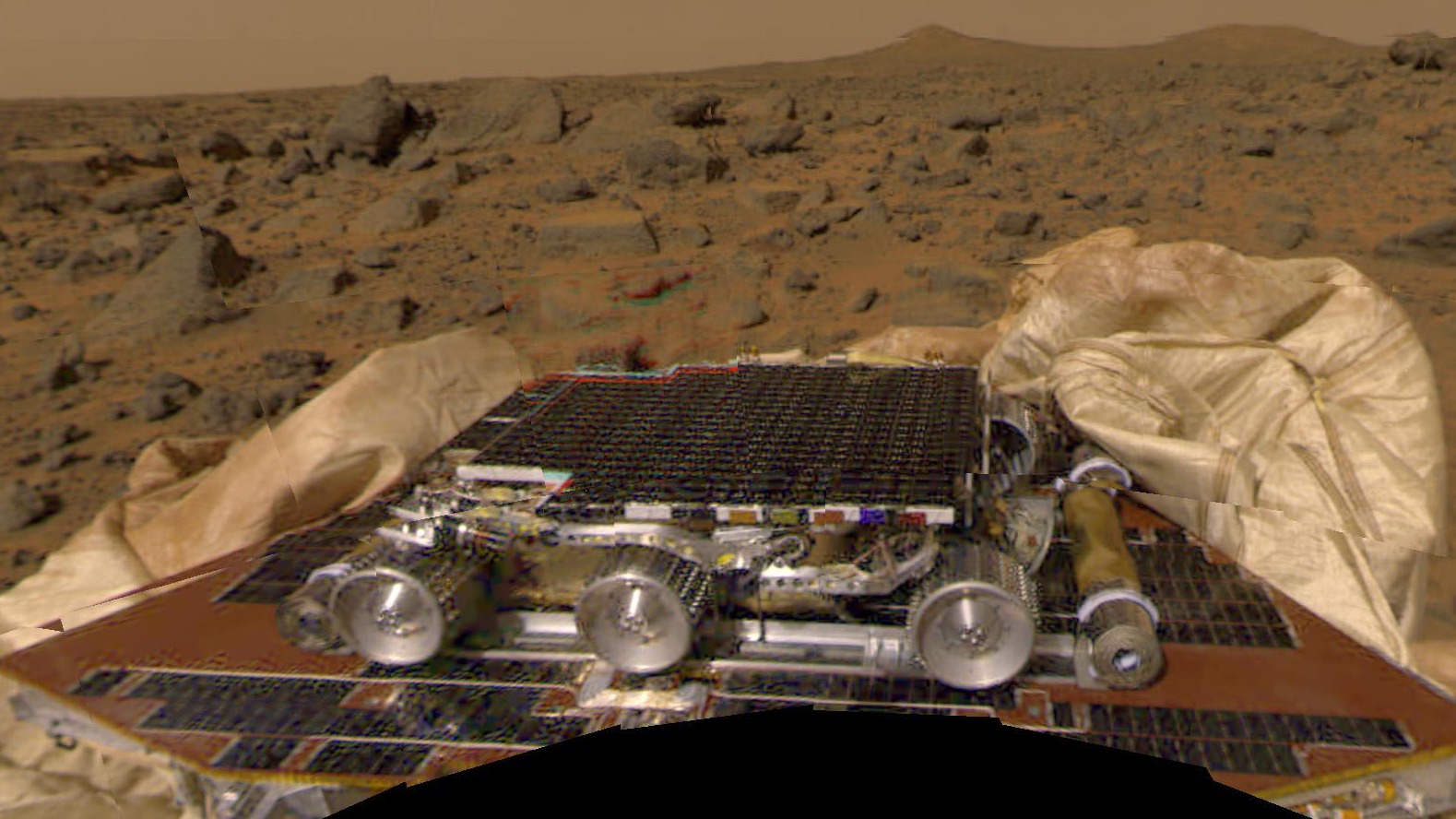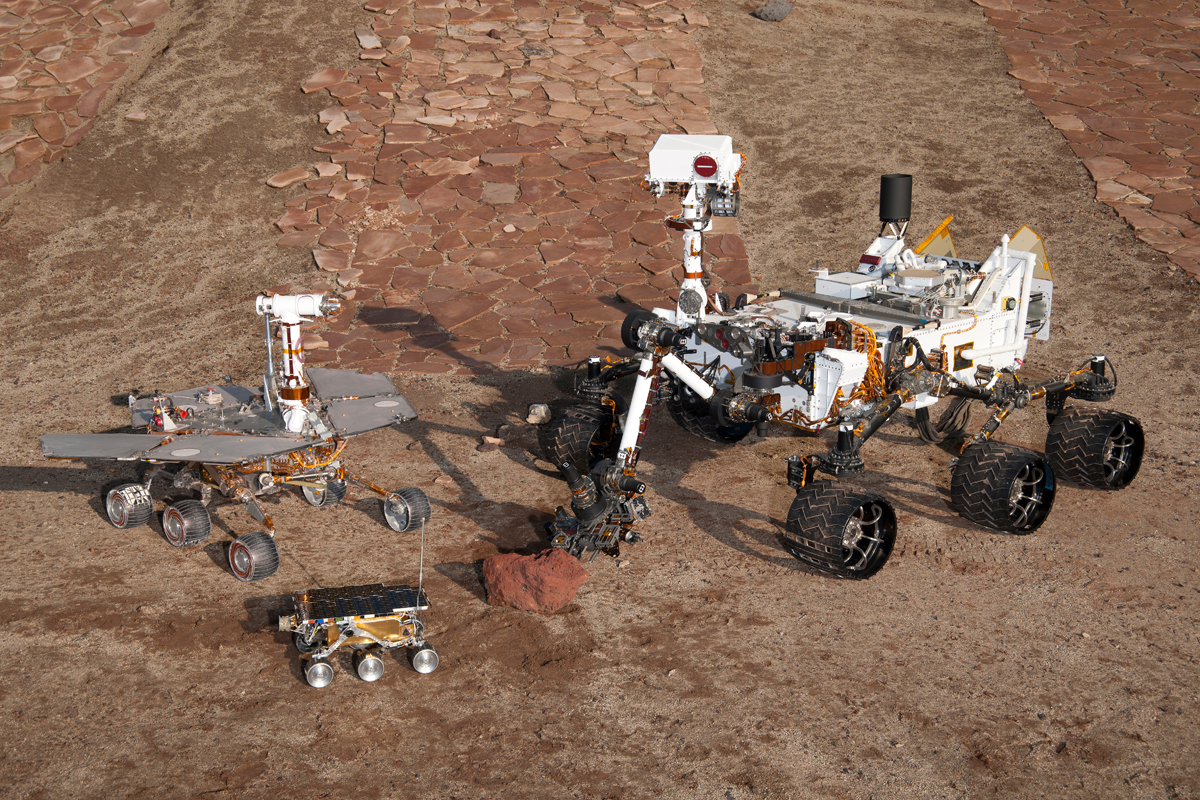NASA's 1st Mars rover touched down on the Red Planet 25 years ago
The tiny vehicle and its lander, Pathfinder, paved the way for the car-sized Curiosity and Perseverance.

It was on Independence Day 25 years ago that a little rover named after a Civil War abolitionist parachuted and tumbled to the Red Planet's surface on airbags.
NASA's first-ever Mars rover, dubbed Sojourner, touched down in Chryse Planitia on July 4, 1997, atop its landing vehicle, Pathfinder. The pair of spacecraft heralded a revolution in Mars exploration technology that NASA's Curiosity and Perseverance rovers continue to this day, a quarter century later.
The Pathfinder rover's name was selected from a nationwide contest won by Valerie Ambroise, 12, whose winning essay discussed the importance of Sojourner Truth, aka Isabella Van Wagener. (Now, the essay winner appears to be a real estate agent in Connecticut.)
Related: 1 year later, Ingenuity helicopter still going strong on Mars
The Sojourner rover namesake spent nearly four months — 12 times its design lifetime — working on Mars: nestling up to rocks, analyzing their chemistry and relaying its observations to Earth.
The results, broadcast in real-time on early Internet networks, showed a Red Planet potentially habitable to life: "Resulting scientific findings suggested that Mars was at one time in its past warm and wet, with water existing in its liquid state and a thicker atmosphere," NASA's Jet Propulsion Laboratory (JPL) in California, which managed the rover, stated of the mission.

Today Sojourner serves as an important solar-powered ancestor for today's much larger, nuclear-powered rovers by NASA: Curiosity (about to hit its 10th Earth anniversary on Mars) and Perseverance (which touched down on Feb. 18, 2021 accompanied by the first-ever Martian helicopter, Ingenuity.)
Get the Space.com Newsletter
Breaking space news, the latest updates on rocket launches, skywatching events and more!
These rovers form part of a generation-long network of landers, orbiters and other vehicles exploring the Red Planet to make sense of its complex history. Why the Martian atmosphere thinned, how much water ran on the surface and whether habitable conditions were present are questions that still preoccupy scientists today.
Twenty-five years ago today, a true pioneer touched down. Sojourner proved we could drive on Mars; each rover since has done true overland exploration. I’m the fifth in this line, collecting samples that could one day return to Earth and rewrite history. Onward. pic.twitter.com/ikLdrPOc7cJuly 4, 2022
The mission also served as a leading light in engaging the public. Today's rover teams use tweets, TikTok, and livestreamed events to herald new findings on Mars.
The much earlier Internet of 1997 saw frequent uploads of pictures to the Pathfinder website, which still sports its pre-millennial design today. At first, NASA thought it would get 25 million downloads post-landing; it quickly updated that estimate threefold, the agency recalled in 2017. The traffic load forced other agency servers to pitch in to avoid website crashes at NASA's Jet Propulsion Laboratory, but it all worked.
Pathfinder proved so popular in the public's memory that it represented a crucial turning point in 2015's "The Martian," a Hollywood movie (promoted by NASA and based on an Andy Weir novel) about an astronaut making his way solo on the Red Planet after being stranded.
The mission made its final transmission on Sept. 27, 1997, leaving both Pathfinder and Sojourner silent on the surface, but its data will persist essentially forever. NASA still holds 16,500 images from Pathfinder and 550 images from Sojourner that modern-day scientists can analyze to gain new insights about the Red Planet's history.
Follow Elizabeth Howell on Twitter @howellspace. Follow us on Twitter @Spacedotcom or Facebook.
Join our Space Forums to keep talking space on the latest missions, night sky and more! And if you have a news tip, correction or comment, let us know at: community@space.com.

Elizabeth Howell (she/her), Ph.D., was a staff writer in the spaceflight channel between 2022 and 2024 specializing in Canadian space news. She was contributing writer for Space.com for 10 years from 2012 to 2024. Elizabeth's reporting includes multiple exclusives with the White House, leading world coverage about a lost-and-found space tomato on the International Space Station, witnessing five human spaceflight launches on two continents, flying parabolic, working inside a spacesuit, and participating in a simulated Mars mission. Her latest book, "Why Am I Taller?" (ECW Press, 2022) is co-written with astronaut Dave Williams.









